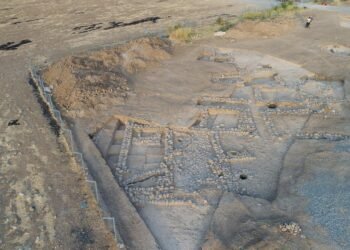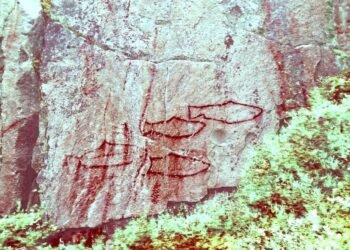Researchers in Valencia have finally unraveled the age-old mysteries surrounding a historic sword, affectionately dubbed “Excalibur.” Discovered upright in 1994 at an archaeological site nestled within Valencia’s ancient town, this iron sword has long captivated scholars and enthusiasts alike, with its enigmatic origins shrouded in the annals of time.

The artifact was initially unearthed in the north of the ancient Roman Forum. Over the past three decades, the sword’s actual age and importance have remained mysterious, impeding efforts to understand its cultural and historical significance.
However, recent efforts by the Archaeology Service (SIAM) of the Valencia City Council have brought clarity to this enigmatic artifact. Through meticulous dating techniques, researchers have determined that “Excalibur” hails from the 10th century, firmly establishing its antiquity at over a millennium old. This revelation places the sword within the tumultuous era of Islamic rule in Spain, known as Al-Andalus, marking it as a rare artifact from this period.
The artifact, measuring approximately 18 inches in length, boasts a hilt adorned with bronze plates and a blade that gently curves towards the tip. Despite initial confusion regarding its resemblance to Visigoth swords, further analysis and restoration efforts have definitively attributed its origins to the Islamic period.
The councilor for Cultural Action, Heritage, and Cultural Resources, José Luis Moreno, has assured that “thanks to the archaeology scholarship convened by the Valencia City Council, the archaeologist José Miguel Osuna is carrying out a detailed study of analysis of metallic objects that go from Roman times to the late medieval period and where a new and exceptional find has come to light, which we have called the Excalibur de Roc Chabàs to be very similar to the legendary sword of King Arthur.”
According to the councilor, “This sword has a unique design that gives it great archaeological and heritage value, so we have a new treasure in this Islamic Excalibur and a historical legacy of ancient Balansiya.”
The analysis of the artifact is part of the municipal Archaeology Service’s activities as they commemorate their 75th anniversary in 2024. This includes cataloging and reviewing artifacts, with the culmination being an exhibition held at the Town Hall’s exhibition hall after the summer.






















